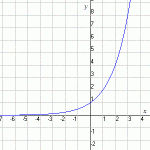 Find a smooth, cylindrical support column, such as those used to support open-air roofs for breezeways and outdoor hallways (check your local public school or local church). Wind a length of rope one time around the column, and pull on one end while three friends pull on the other in a tug-of-war fashion.
Find a smooth, cylindrical support column, such as those used to support open-air roofs for breezeways and outdoor hallways (check your local public school or local church). Wind a length of rope one time around the column, and pull on one end while three friends pull on the other in a tug-of-war fashion.Experiment with the number of friends and the number of winds around the column. Can you hold your end with just two fingers against an entire team of football players? You bet!
Please login or register to read the rest of this content.


Thanks for writing! I totally understand your thinking, and this science excerpt actually came from a college physics class I taught about friction and mechanics called the Euler-Eytelwein (or the Capstan) equation, which has the term “e” in it for exponential. You can read about it here. – it’s used for calculating the friction of belts around pulleys, etc. Here’s a more plain-English explanation of how it works.
The Euler-Eytelwein equation relates the tension of two ends of a rope like this: T2 = T1 eμθ, where T2 is the tension in the rope due to the load, T1 is the tension you need to hold the load, μ is the coefficient of friction between the rope and the thing you’re wrapping around, and θ is the angle made by all the rope windings (measured in radians, so one full winding is 2∏ radians).
Hope this helps – and I appreciate your sharing feedback – sometimes I do make mistakes and it’s important to correct those!
Aurora
Aurora,
I believe the increase in friction from aditional wraps around the pole is in fact less than linear, not exponential. The available normal force is not multiplied by wrapping, the coeffficient of friction is constant, only the area increases. In fact as friction reduces tension in the rope for successive wraps, normal force decreases. It is a very effective trick for anchoring or controlling a load, I use it often in rigging. But NOT “exponential”, a mathematical term of specific meaning.
I got my nylon rope at the hardware store.
Yes as long as it’s not too slippery!
can it be nylon cord?
were can i find cheap nylon rope
It should have stated, the rope getting smaller (tighter) “rather” than friction. oops.
Cool! Glad you enjoyed the experiment! I wasn’t sure what you meant by “rope getting smaller than friction…” so if you still have a question about this experiment, can you clarify a little more so I can help?
Hi! After we did this experiment, we wondered if it was more the loop in the rope getting smaller than friction. We repeated this experiment with a smooth metal rod to reduce friction and found that it is definitely friction. Really nifty way to understand exponential friction. Thanks, Alex and Evan